The Ultimate Everglades National Park Travel Guide
This article originally appeared on Outside
I first saw the Everglades more than 30 years ago, as a kid from Chicago dragged along by my parents. Buggy, hot, and flat, what I laid eyes on then was a sodden grassland, and I wasn't much impressed. But there's a reason the Glades remained wild well after the continent had been "conquered," why the migrant Seminoles were able to hide so long in its redoubts from the U.S. Army. Even today, this national park is massive. Its 1.5 million mostly inaccessible acres make it the third-largest national park in the lower 48 after Death Valley and Yellowstone. Now, after living on its doorstep for 20 years, I've become enthralled with its untamed nature.
A catch-all term for many different ecosystems, the Everglades once stretched more than 200 miles, from the Kissimmee River in Orlando, south past Lake Okeechobee, to the state's southernmost tip and the Gulf of Mexico. Today the national park preserves just 20 percent of that, and cities, suburbs, and agricultural land abut its very edges. But the preserved Glades are as wild as it gets. Crocodiles and alligators, the Florida panther, manatees, and a vast number of flora, fauna, and invasive species of all sorts call the place home. Fragile and always changing, this Unesco World Heritage site is under threat of real inundation as sea levels rise, as well as from red tide and blue-green algae blooms (possibly caused by agricultural runoff), which have been devastating in recent years. The Glades are also a premier dark-sky zone, a sanctuary for migratory birds and raptors, and a refuge to get absolutely lost and forget the modern world exists at all. Here's our guide to the Everglades on how to do just that.
What You Need to Know Before Visiting Everglades National Park

There are two main seasons in the Everglades: the wet and the dry. From April to October, it is so hot and humid that even short excursions can be draining, and some park facilities, such as the remote Flamingo Visitor Center, are staffed only intermittently. I've found myself wiping masses of mosquitos off my bloody arms in summer, and the no-see-ums can be even worse, driving the stoutest of hearts bonkers. The upshot is that there are fewer crowds during these months. The dry season, which runs November through March, can be idyllic and mild. But whatever the season, pack bug repellent or netting, and be prepared for drenching rain.
Surrounding the park, especially its western parameters, are small, interesting towns like Everglades City, which some of the fabled Gladesmen--non-native people who managed to decipher the mysteries of the swamp and carve out frontier lives for themselves--still call home. The Everglades City area was so lawless in the recent past that bales of cocaine and marijuana were alleged to have regularly washed up on the shore. In 2017, Hurricane Irma tore through the area, and the people who live there are still recovering.
Finally, there's no better way to prepare for a journey to the park than to pick up a copy of The Everglades: River of Grass, by the late journalist and conservationist Marjory Stoneman Douglas. A seminal work on South Florida's unique ecology, the book was published in 1947, the same year the Glades were designated a national park. The ecosystem was not seen as something worth saving by the many developers who drained and ditched this region all through the 20th century. That a significant part of the Everglades remains is due in large part to Douglas's activism.
How to Get There
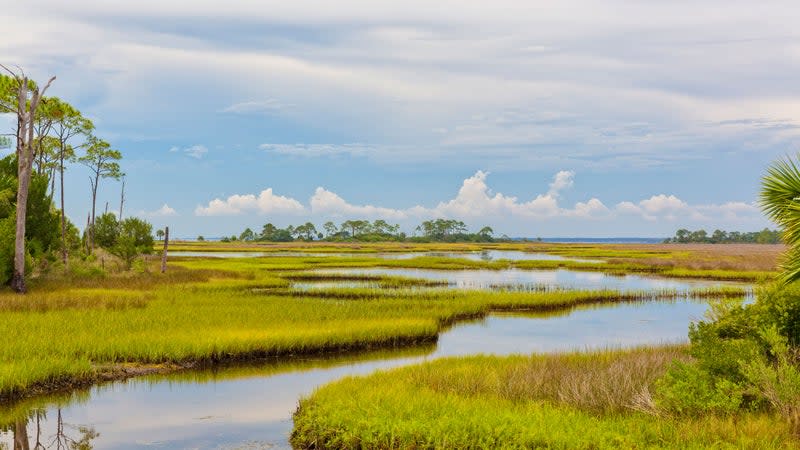
The Glades are so expansive that seven airports serve as access points. Though some require longer drives than others, none are more than four hours away (and most much less). So it's best to pair your arrival city with other things you might like to do: Orlando has theme parks; Tampa and Miami, nightlife and museums; Sarasota, Fort Myers, and Naples, fine dining, golf, and charter fishing; and Key West, Hemingway kitsch, history, and endless margaritas.
Once you choose your airport, there are three main entrances and four visitor centers, as well as an information station in the park. The Shark Valley and Ernest F. Cole Visitor Centers and the Royal Palm Information Station and Bookstore--all easily accessed from Miami--are close to civilization on the park's east side and offer ranger-led programs. Shark Valley's 45-foot-tall, 360-degree observation tower is a popular stop. On the park's west side, in Everglades City, the Gulf Coast Visitor Center is easily accessed from Naples and is the best entry point for the coastal Ten Thousand Islands region, a birding, fishing, and kayaking paradise. There's also the Flamingo Visitor Center on Florida Bay, on the park's far southern tip, accessible by car from Miami or by boat from the state's east and west coasts.
Road access is straightforward. On the west side, U.S. Route 41 is the only road in from Tampa, Sarasota, Fort Myers, or Naples. From Miami, U.S. Route 41 and Florida State Road 9336, which turns into Main Park Road, are the main points of entry. From Orlando, either side is equally convenient. But no matter where you're coming from, if you want to explore the west coast, where the river of grass meets the sea, it's easiest to bring your own canoe or kayak or rent one in Everglades City at the Ivey House. Beware: the waters are shallow, and the underwater environment is fragile. If you get stuck in the mud, you'll have to get out of your boat and push, which tears up the underwater seagrass habitat. Depth finders should be used, and knowledge of tides and nautical maps and an awareness of vulnerable manatees are also essential.
Where to Stay In or Near the Everglades
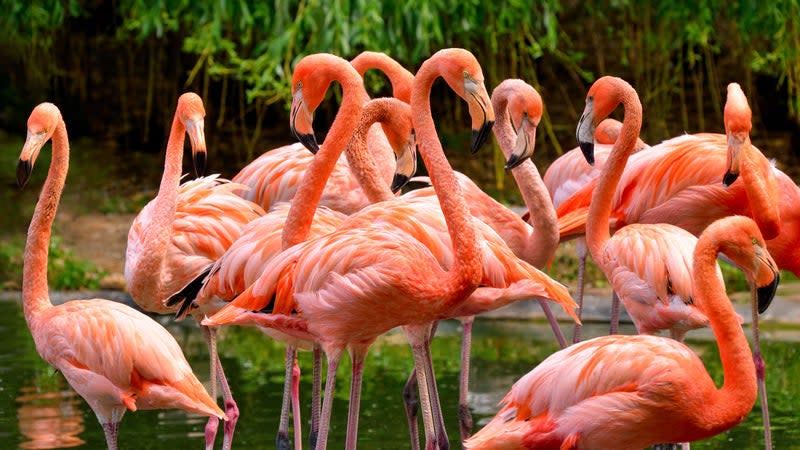
Despite the park's massive size, traditional front-country camping and RV services are limited to just two sites inside the park. Long Pine Key Campground, near the Royal Palm Information Station, is only open November through May ($30 per night, no electric hookups available), while Flamingo Campground is open all year ($30 per night, $45 for electric hookups) and offers watercraft rentals. Reservations are recommended during the dry season.
There's plenty of Gulf of Mexico beach camping on the park's west coast, and much of the park is only accessible by canoe, kayak, or flatboat, so backcountry campers will be rewarded with solitude like few other places left in the U.S. But you must take trip planning seriously and pack your canoe or kayak with enough food and water for the length of your excursion. You'll also need to know how to orient yourself with GPS and nautical maps--it's easy to get lost in this landscape of repetitive landmarks. Backcountry camping permits are only issued on a first-come, first-served basis in person at the Flamingo and Gulf Coast Visitor Centers ($21 fee, plus $2 per day).
If you like a bed and shower, Everglades City is a great base camp. The town has a museum, restaurants, and an eclectic assortment of hardy inhabitants. Places to stay include Ivey House Everglades Adventure Hotel (from $129) and the cottages at the turn-of-the-century Rod and Gun Club (from $125). Longer-stay self-catering options include the Captain's Table Hotel (from $109), great for large groups, and the waterfront one- and two-bedroom cabins at River Wilderness (from $130). You can also rent kayaks and gear at Ivey House, take swamp-buggy tours, and hire park-approved fishing charters and guides to lead you into the Glades.
The Best Adventures in Everglades National Park
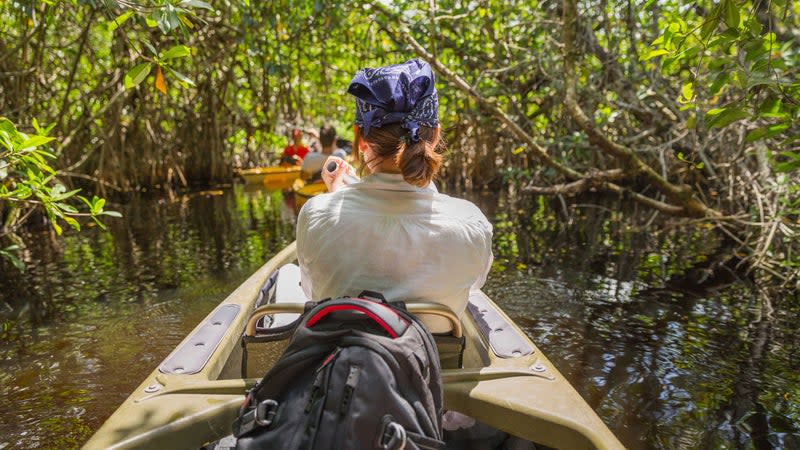
Most of the park's one million annual visitors don't penetrate much farther than a visitor-center walking tour, but the Glades offer myriad activities for those willing to brave the maze-like waters, tall grasses, and mangrove isles. Whatever activities you choose, they'll all have at least one thing in common: you're probably going to get wet.
Bird-Watching
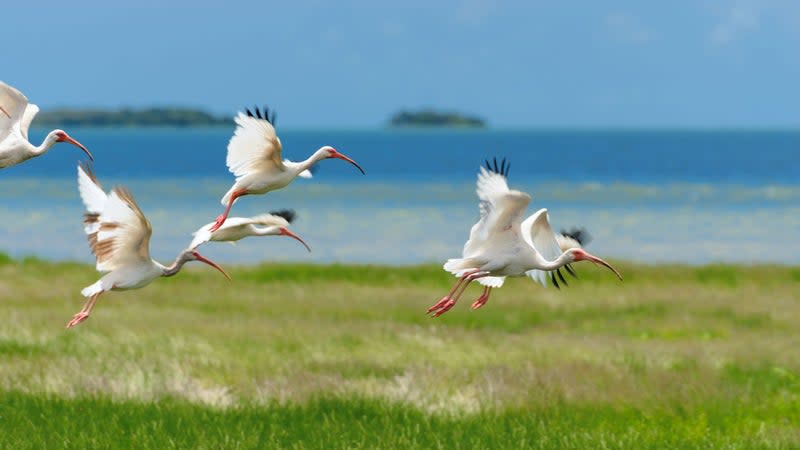
If you're a birder, there is no better place in the country to check off your life list than the Everglades, which boasts more than 360 of the winged species. Just pick a bird on your list--for me it is always the skittish and pink-hued roseate spoonbill--and in the Glades you know you are going to see it. Snowy egrets and wood storks are everywhere, osprey--and the bald eagles that steal their fish--circle overhead, and if you find a lucky spot in the mangroves, flock after flock of curved-beaked ibis will zip over your head as they head home to roost in the evenings. Keep an eye out for black skimmers, a shorebird that is making a rebound; you'll know them as the seagull-like birds with an incredible underbite that seem to have no eyes at all because of their black and white coloration. Reserve tickets online for the Shark Valley tram to see wading birds, like limpkins. Kayakers can turn a corner in the islands and mangroves and happen upon a rookery that's filled shoulder to shoulder with hundreds of birds: ibis, herons, egrets, wood storks, anhingas, and cormorants galore, and the spring- and fall-migration periods will offer you dozens of species a day without any struggle. Even if you never leave your car, you'll see birds. That's the charm of the Glades.
Paddling
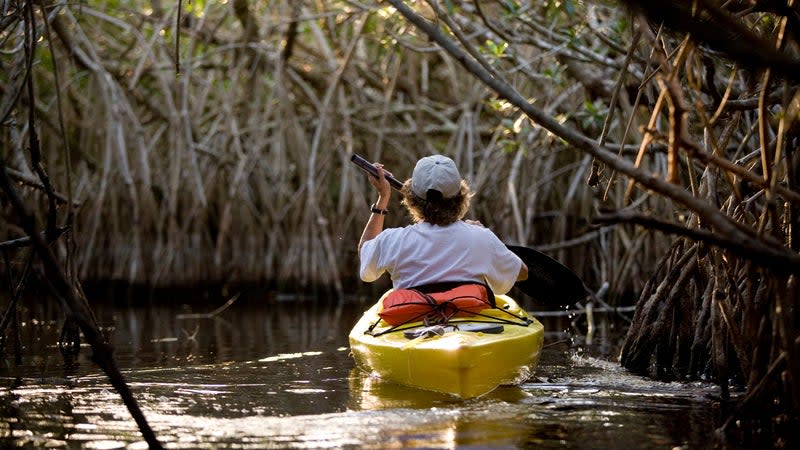
Launch your canoe or kayak at either the Flamingo or Gulf Coast Visitor Centers for a day trip or a two-week expedition. Between the two points are 100 miles of interconnected, watery wilderness, backcountry campsites, and a few marked canoe trails to help keep you from getting lost. The 5.2-mile loop through the grass marshes and mangrove islands around Nine Mile Pond is a favorite for day-trippers. Still, those who lose their way keep park rangers busy with regular rescues. If you want an expert to lead you, Tour The Glades, based in Everglades City, offers excellent, private ecotours.
The water is murky and full of creatures that will splash near your craft. Don't worry, the usual cause of commotion is not alligators but mullet, a fish that schools here and is an important part of the food chain. For some reason that scientists still don't understand, the foot-long, thick-bodied fish loves to leap out of the water, and it happens all day long. You will see gators, but they'll leave you alone. That said, I keep my distance from any reptile longer than I am tall. If you camp on the beach, don't tread on sea turtle nests, and if you paddle or boat along the coast, you will at some point be accompanied by dolphins.
Fishing Trip
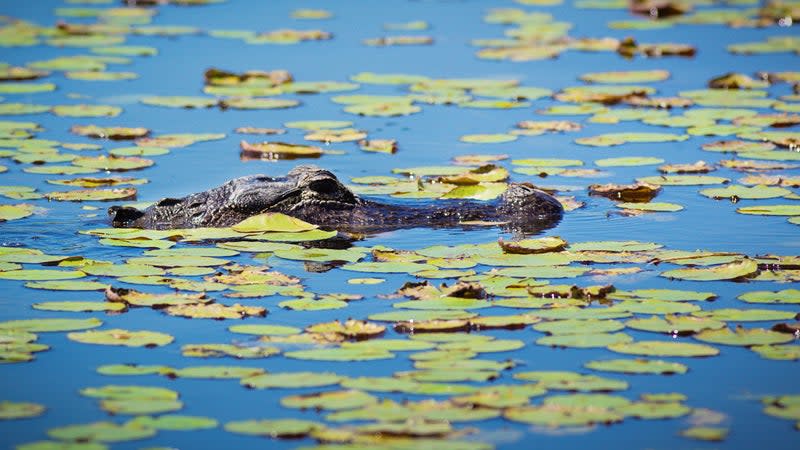
There are nearly 300 species of fish here, and the first step to landing them is to get a license online at the Florida Fish and Wildlife Conservation Commission's website (the park itself has some special regulations outlined here). Light tackle is fine for freshwater areas. I use crawlers and land plenty of panfish, catfish, and bass. Unfortunately, you're also likely encounter the invasive Southeast Asian walking catfish, a creature that can "walk" on its front fins overland to infest ever more bodies of water. If you catch one, you can release it. But if you decide to keep one, by law it must be killed.
In the brackish water of the mangroves, anything can happen, and you never know what you'll hook, from the delicious and gorgeous black-lined snook to equally delicious sheepshead and snapper. I use live shrimp for bait both here as well as out in the saltwater. If you want to land a tarpon, one of the region's premier saltwater game fish, heavier tackle and wire leaders are musts, and it's better to go out with a guide. They have the local knowledge and all the expensive gear that will improve your chance of tight lines.
One of the great joys of my life was learning to throw a ten-foot, lead-skirted net for mullet. It isn't easy, but all the local guides can offer lessons for the determined and interested. These fish will not take a hook, but if you have the shoulder and core strength to throw the net, it's a true South Florida experience, and you can haul in a biblical bounty of these delicious silver beauties.
Everglades City remains a fishing paradise, as it was not hit by the red tide that ravaged the state in 2018. Fishing guides of note include Jimmy Wheeler and Jesse Hill, though as Kathy Brock, publisher of Everglades City's newspaper, The Mullet Rapper, notes, "All our guides here are good. They can't survive if they're not."
Hiking Trails
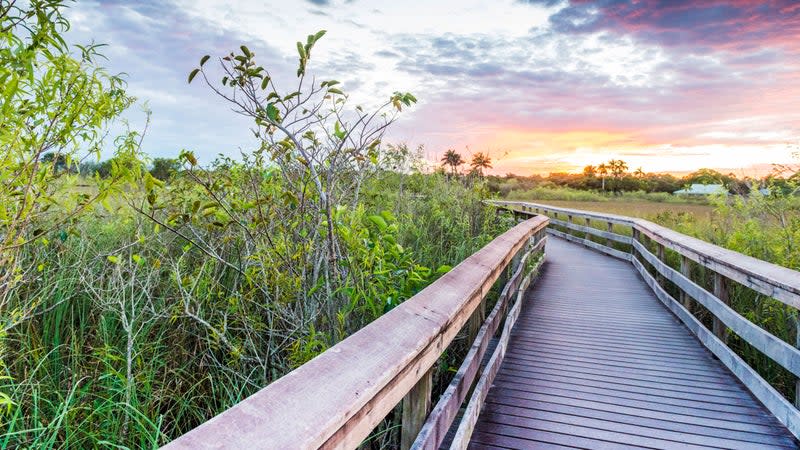
Short, interpretive trails are offered at all of the park's visitor centers, but while wonderful and easy, they won't satisfy those looking for a demanding, all-day trek. For that, head to the Old Ingraham Highway--accessed from Royal Palm--for a 20-mile round-trip trek in absolute solitude on what was once a paved road but has long since fallen into wild decay. The Coastal Prairie Trail--accessed from Flamingo--is a 15-mile round-trip that offers backcountry camping at Clubhouse Beach. The campsite requires a permit obtained at the Flamingo Visitor Center.
Ecotours
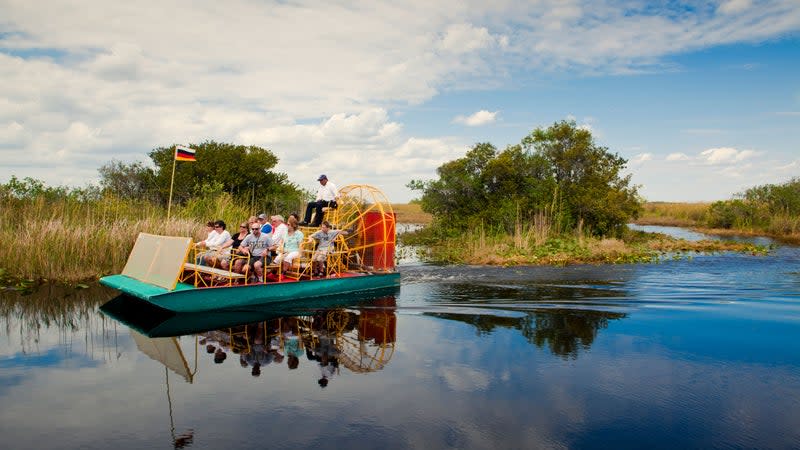
If you're pressed for time or want a better understanding of the Glades' ecosystem, sign up for a guided airboat tour. On the park's northern edge, just off U.S. 41, three park-approved airboat companies--Coopertown, Everglades Safari Park, and Gator Park--will take you into areas adjacent to the park (airboats are not allowed in the park itself due to the risk of damaging fragile submerged flora), schooling you on the region's unique environments as you go.
Where to Eat and Drink Near the Everglades
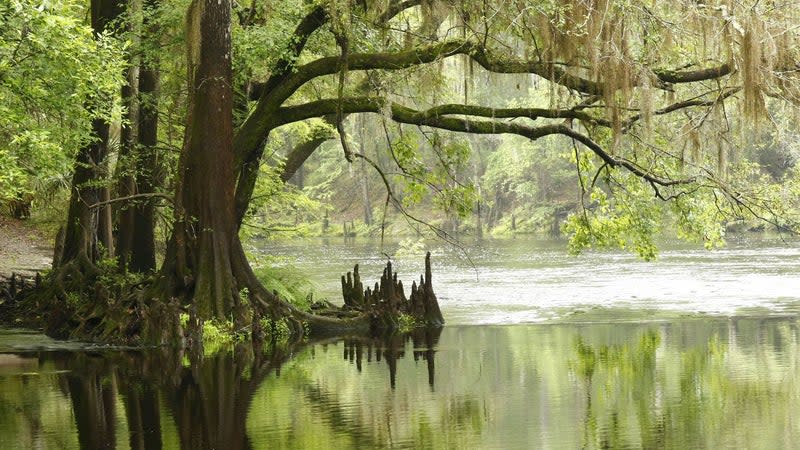
Shop around in Everglades City, and find a menu that offers smoked mullet. It tastes like a moist, jerky delicacy. Restaurants include the year-round City Seafood, Island Cafe, Havana Cafe, and Camellia Street Grill, as well as the seasonal Triad Seafood Market (closed in summer). Also look for any menu that offers wild hog. The first Spanish explorers to Florida brought domesticated Iberian pigs with them as walking meat lockers. Some escaped, and now more than half a million feral hogs call Florida home. In Spain, these animals were raised on acorns and are to this day considered the highest-quality meat in that country. Here on this peninsula, they roam free in the Everglades, tearing up the environment with their bulldozer-like snouts, which means their meat is both delicious and good for the environment.
Stone crab season runs October to May. After taking just one claw from these thick-shelled crustaceans, fishermen throw the living crabs back into the water, where they will regenerate the missing claw over three years. All the local restaurants feature them.
Speaking of crab, I prefer the blue variety, which you can catch in the mangroves. Don't bother with a trap (though you can set up to five if you insist). Just cast out any hunk of meat on a hook, and as soon as your line goes tight, reel it in very slowly: the crabs are so greedy that they won't let go. All you'll need is a dip net. Sex them on capture, and release any females. Males have a thin, narrow "apron" on their undersides, while females' aprons are wide and triangular. There's no special permit required and no better backcountry meal. They're delicious boiled live in a pot.
If you can, plan your trip for early February when Everglades City hosts its annual Everglades Seafood Festival. Its post-Irma resilience was on full display in 2018 as more than 60,000 people descended to show their support and eat local seafood of every variety while enjoying the live local music.
If You Have Time for a Detour
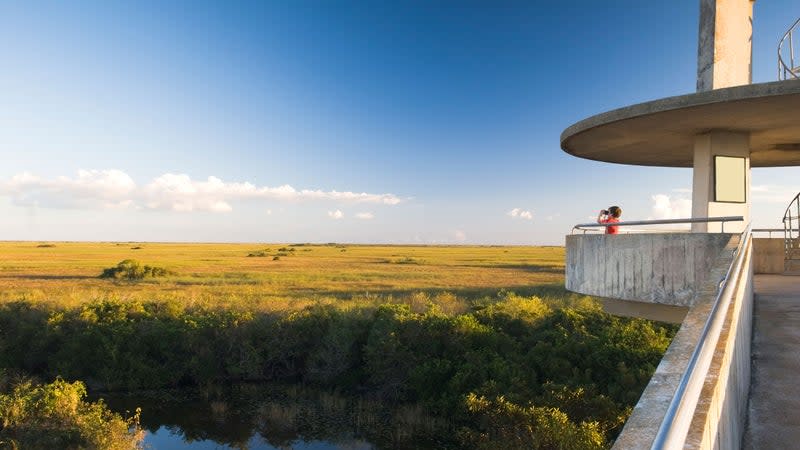
If you fly into Orlando, stop by Eatonville, a town founded by African Americans at the turn of the 19th century and now consumed by Orlando's sprawl. It's the site of the writer Zora Neale Hurston's acclaimed novel Their Eyes Were Watching God, which has many scenes set in the Everglades and chronicles the 1928 hurricane, during which the banks of Lake Okeechobee overflowed into the Glades, killing 2,500 Floridians, including many poor African Americans. Like Stoneman's The Everglades, Hurston's novel should be read in advance of any visit to the Glades. Popular attractions include the Zora Neale Hurston National Museum of Fine Arts and, in late January, the popular Zora Festival, which has been celebrated for more than 30 years.
Those who find themselves in the Keys should be sure to hike the trails of the Dagny Johnson Key Largo Hammock Botanical State Park. In ecological terms, a hammock is a type of habitat found in the region's higher, drier elevations, and this park is home to one of the largest remaining West Indian tropical-hardwood hammocks in the world. In Key West, hop on the Yankee Freedom III for a ride over to Garden Key and Dry Tortugas National Park. Explore imposing Fort Jefferson before paddling a rental kayak to Loggerhead Key to camp on the island or dive the Windjammer, a 19th-century shipwreck. And off the coast of Summerland Key is Looe Key Reef, my favorite place to dive in the Keys. Part of the Florida Keys National Marine Sanctuary, this is a special sanctuary preservation area. Corals are under threat all across the region due to climate change and ocean acidification, but Looe Key teems with corals and fish and reminds us of how things once were.
The Tamiami Trail, a 60-mile stretch of U.S. 41 that cuts right across Florida from east to west along the northern edge of the Everglades, offers campgrounds and RV parks. You'll also find many federally recognized Miccosukee Indian villages, recognizable by their thatched homes and security gates. At Miccosukee Indian Village and Airboats, you can watch demonstrations of wood carving, beadwork, basket weaving, and doll making as well as taste unique dishes like fry and pumpkin breads and frog legs or witness alligator demonstrations. During the last week of December, the Miccosukee also host the Indian Arts and Crafts Festival.
The trail is also home to Clyde Butcher's Big Cypress Gallery. Known as the Ansel Adams of the Everglades, the storied photographer--who is a friend of mine and many other South Florida environmentalists--struggled to support his family and make a living most of his life. But following the death of his 17-year-old son, in 1986, Butcher stepped into the Everglades to heal and produced his now iconic black and white photographs of the region's wild places. Today even Queen Elizabeth owns one of his prints. His gallery, located almost halfway between Naples and Miami, offers guest stays and walking tours. If you're lucky, Butcher will be there during your visit. In failing health, he's still a library of information about the history of the conservation work that made the preservation of the Everglades possible.
Editor’s Note: We frequently update this National Parks guide, which was originally published on May 13, 2019.
For exclusive access to all of our fitness, gear, adventure, and travel stories, plus discounts on trips, events, and gear, sign up for Outside+ today.